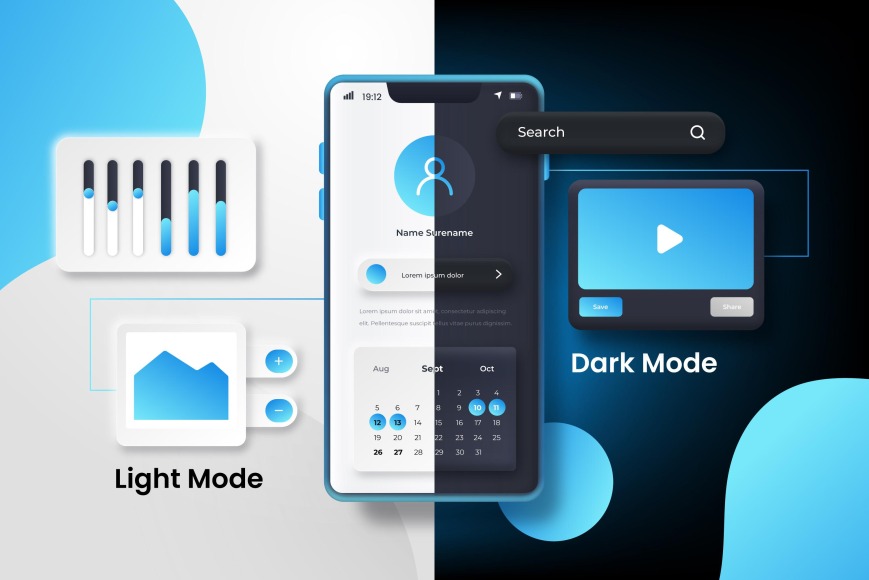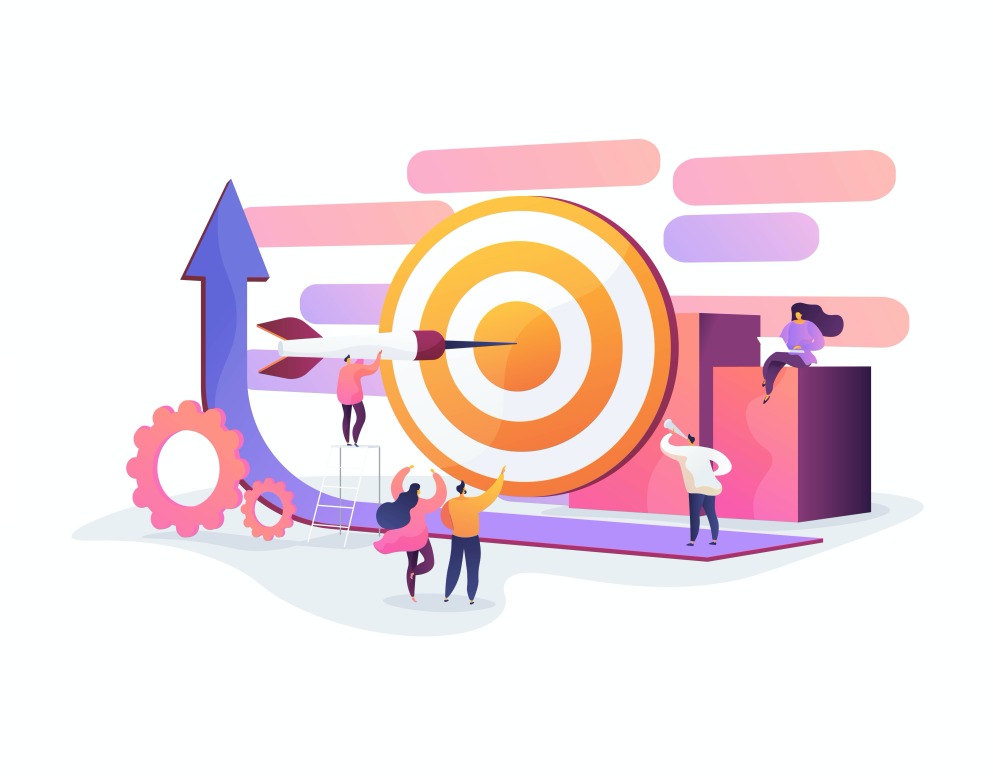When it comes to designing and growing your website, there are many approaches you can take. But if you want to ensure continuous growth for your business, then growth-driven design (GDD) is the way to go. GDD is a methodology that takes a systematic and steady approach to create continuous growth. It starts with understanding your users and their needs and then creating and implementing a plan to address them. That’s why in this guide, we’ll be taking you through the steps of the growth-driven design methodology.
What is Growth-Driven Design?
GDD is a website design and development methodology focused on creating continuous growth. The goal of GDD is to design and develop a website that meets the needs of your users and helps you achieve your business goals. Unlike the traditional web design process, which can take months or even years to complete, GDD is an iterative and ongoing process that helps you constantly improve your website based on data and user feedback. When continuous improvement is your goal, GDD is the methodology for you. When the traditional website redesign process fails to deliver results, the growth-driven design will help you achieve your goals.
Difference Between GDD and Traditional Web Design
Many think that Growth-Driven Design (GDD) is just a new name for traditional web design. While there are similarities, GDD is a distinct process that offers several advantages over the traditional approach.
1. The conventional web design process involves creating a comprehensive site plan upfront, then designing and building the site simultaneously. This can take months, and it may need to be updated by the time the site launches.
2. Traditional web design can be very expensive since you’re paying for everything all at once. GDD is much more affordable since you only pay for what you need at each stage of development.
3. And finally, traditional web design can be very frustrating for everyone involved since there’s often a big gap between what the client wants and what the result looks like. GDD avoids this frustration by involving the client in every process step so everyone is always on the same page.
The Benefits of Using the Growth-Driven Design Methodology
Let us know some benefits why you should using GDD methodology:
Increased ROI
A/B testing and other forms of experimentation allow you to make small, incremental changes to your website that impact your bottom line. In web design, the traditional Waterfall method typically leads to large up-front costs with no guarantee of return on investment. With GDD, you can start seeing results and ROI much sooner. Suppose you test two headlines on your homepage to see which one performs better. With GDD, you can make that change quickly and easily without having to wait for a new website launch. As the continuous improvement stage of GDD is all about making small changes that have a big impact, you can expect to see a significant return on investment from using this methodology.
Faster Time to Value
GDD also allows you to get your website up and to run faster. Because you’re not starting from scratch, you can launch your minimum viable product (MVP) in just a few weeks. From there, you can continue to add new features and functionality over time. This is a big contrast to the Waterfall method, which can easily take months or even years to complete. When the marketing teams see the value of their new site much sooner, it’s a big win all around. And as the growth-driven design process is data-driven, you can be sure that the features you’re adding are the ones that will have the biggest impact on your business.
Reduced Risk / Minimizes the Risks
By its very nature, GDD is a low-risk approach. You’re not making huge bets up front but rather incrementally adding new features and functionality over time. This allows you to correct courses based on actual data and user feedback. When the launch pad website is live, you realize that one of the pages isn’t performing as well as you’d hoped. With GDD, you can quickly pivot and make the necessary changes. With Waterfall, on the other hand, you’d be stuck with that page – and all of its associated problems – for the life of the website. The launchpad site is also designed to be flexible so that as your business evolves, your website can evolve right along with it.
GDD is a low-risk approach as it does not require huge upfront investments. The features and functionalities are added incrementally, allowing course correction based on actual data and user feedback. This makes managing risks easier and avoids potential problems arising from making large bets upfront.
Different types of risks are involved in product development. Many of these risks can be mitigated by using the GDD approach:
- Market risk: This is the risk that the target market for the product may not exist or may be smaller than expected.
- Technology risk: This is the risk that the technology used to build the product may not be able to meet the required performance benchmarks or may not be compatible with other technologies that need to be integrated. Using an iterative approach, it is possible to assess the feasibility of the technology stack before making a large bet on it.
- Implementation risk: This is the risk that the product may not meet the required functionalities or be unable to scale as per the demand. By using an agile approach, it is possible to assess the feasibility of the implementation before making a large investment in it.
- Business model risk is the risk that the business model underlying the product may not be viable.
- User adoption risk: This is the risk that users may not adopt the product. By starting with a small MVP, it is possible to assess user reactions and feedback before making significant investments.
Want to create a successful customer experience by using the growth-driven design framework?
Contact Growth Hackers
More Flexibility
Usually, when you launch a new website, it’s not perfect. There are always going to be areas that you wish you could go back and change. But once the website is live, those changes are very difficult (sometimes impossible) to make. GDD allows you to make changes on the fly based on how users interact with your site. So if you realize that a certain element isn’t working well, you can quickly swap it out for something that does. When your fundamental assumptions about your website turn out wrong, GDD lets you course correct without starting from scratch.
Improved User Experience
The goal of GDD is to continually improve the user experience. You can keep your website or product fresh and relevant by making small, incremental changes. GDD is a data-driven approach that relies on user feedback to make informed decisions. By constantly testing and experimenting, you can learn what works and what doesn’t. The key to successful GDD is frequent iteration. You can keep your website or product evolving by constantly making small changes and improvements. Not only will this improve the user experience, but it will also help you stay ahead of the competition.
Scalability
GDD is a scalable approach that can grow websites and products of all sizes. Whether launching a new website or revamping an existing one, GDD can help you achieve your desired results. The key is to start small and gradually add new features and functionality over time. This way, you can avoid making big, costly mistakes. GDD is also flexible, so it can be adapted to fit the needs of any organization. Your website strategy should be tailored to your specific goals, target audience, and budget. As a successful website grows, so will the scope and scale of its GDD implementation.
How to Get Started with Growth-Driven Design
Now that you know what growth-driven design is and why it’s so beneficial, you might wonder how to get started. The good news is that it’s not as difficult as you think.
Define your goals
Anything worth doing is worth doing well. That’s why it’s important to start by defining your goals. What do you want to achieve with your website or product? What are your objectives? Once you have a clear understanding of your goals, you can start to develop a plan for how to achieve them. Suppose you want to increase website traffic by 20%. In that case, you might consider adding new content or redesigning your home page. In a launch pad scenario, you might want to focus on adding new features to improve the user experience.
Identify your users
Who are your users? What do they need and want from your website or product? These are important questions to answer before developing a growth-driven design plan. Once you understand your users well, you can develop features that meet their needs. When the real user data comes in from the launch pad phase, you can use it to further refine your user persona. But make sure to keep your users front and center throughout the process. With the website optimization roadmap in place and the user persona defined, it’s time to move on to the third step.
Create a launch pad website
Once you clearly understand your goals and your users, it’s time to start building your launch pad website. You can use this “minimum viable product” to test your hypotheses and gather data. The goal is to get your launch pad website up and running as quickly as possible so you can start collecting data. Depending on your goals, your launch pad website might be simple or complex. But it is important to get it live so you can start testing and learning.
Ensure continuous growth for your business by using the growth-driven design methodology today!
Collect data and feedback
Data is the lifeblood of growth-driven design. Once your launch pad website is live, it’s time to collect data. This data will help you understand how users interact with your site and what changes need to be made. You can use various tools to collect data, including Google Analytics, heat mapping software, and user testing services. It’s also important to collect feedback directly from users. You can do this through surveys, polls, or even one-on-one interviews.
Make data-driven decisions
Once you have a wealth of data, it’s time to make decisions. What changes should you make to your website or product? What new features should you add? These decisions should be based on the data you’ve collected. If something isn’t working, don’t be afraid to experiment and try something new. The goal is continuously making small changes that will lead to big results over time.
Following are some of the data-driven decisions you can make:
- Add or remove pages based on engagement data: Suppose you have a page that gets a lot of traffic but has a low conversion rate. This could be an indication that the page isn’t relevant to your audience or that it’s not optimized for conversions. In this case, you would want to either remove the page or make changes to improve its performance.
- Experiment with different design elements: Try changing the color of your CTA button or the placement of your opt-in form. See what works best for your audience and stick with the winning combination.
- Tweak your content strategy: Take a look at which pieces of content are performing well and adjust your strategy accordingly. You may need to create more evergreen content or produce more graphics-heavy articles.
- Make changes to your product: Based on customer feedback and usage data, you may need to make changes to your product. This could involve adding new features, redesigning the UI, or changing the pricing structure.
Implement, test and repeat
The final step is to implement the changes you’ve decided on and then test to see how they impact your goals. This is where the cycle of GDD begins anew. You’ll continue to collect data, run more A/B testing campaigns, make changes, and test their effects until you achieve your desired results. And then you can start all over again with a new goal in mind.
Final Thoughts on the Growth-Driven Design Methodology
Growth-driven design is a powerful methodology that can help you achieve your desired results. But it’s not a silver bullet. There is no one-size-fits-all solution for every organization. The key is tailoring the GDD approach to your specific needs and goals.
If you’re looking for a way to improve your website or product, GDD might be the right solution for you. But make sure to do your research and understand the methodology before you get started. And remember, the goal is to make continual improvements that lead to growth. Don’t strive for perfection—it’s unattainable. Instead, focus on making small changes that will significantly impact over time.
So, at last, think about what you need, use resources best, and create a flexible yet systematic approach. And then go for it! We hope this guide has given you the insights and information you need to get started with GDD.
Growth Hackers is definitely one of the top graphic design agencies helping businesses from all over the world grow. There is no fluff with Growth Hackers. We help entrepreneurs and business owners use growth-driven design methodology, generate qualified leads, optimize their conversion rate, gather and analyze data analytics, acquire and retain users and increase sales. We go further than brand awareness and exposure. We make sure that the strategies we implement move the needle so your business grow, strive and succeed. If you too want your business to reach new heights, contact Growth Hackers today so we can discuss about your brand and create a custom growth plan for you. You’re just one click away to skyrocket your business.









